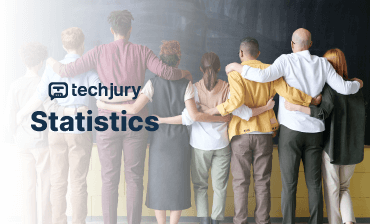The Hidden Language of Workplace Dynamics
Imagine walking into an organization where every employee radiates purpose, enthusiasm cascades through departments, and productivity feels almost effortless. While this might sound like an idealistic scenario, understanding employee engagement through rigorous data analysis reveals fascinating insights into creating such transformative workplace environments.
Employee engagement isn‘t just a corporate buzzword—it‘s a complex ecosystem of human motivation, organizational culture, and strategic alignment. As a data analysis specialist, I‘ve spent years dissecting the intricate patterns that distinguish thriving workplaces from those struggling with disengagement.
The Statistical Landscape of Modern Workforce Engagement
Recent comprehensive studies reveal a startling global trend: only 15% of employees worldwide feel genuinely engaged in their professional roles. This statistic isn‘t merely a number—it represents millions of individuals experiencing disconnection, reduced motivation, and untapped potential.
Global Engagement Variations
Different regions demonstrate remarkable variations in workforce engagement. North American organizations typically report higher engagement rates compared to European and Asian counterparts. For instance, while the United States maintains an average engagement level around 34%, countries like the United Kingdom struggle with significantly lower rates, hovering near 9%.
Psychological Foundations of Workplace Connection
Understanding employee engagement requires diving deep into human psychology. It‘s not simply about monetary compensation or job security, but about creating meaningful connections between individual aspirations and organizational missions.
Motivation Beyond Monetary Rewards
Traditional compensation models fail to capture the nuanced motivations of modern professionals. Today‘s workforce seeks purpose, personal growth, and a sense of contributing to something larger than immediate financial gains.
Research consistently demonstrates that employees who feel emotionally connected to their organization‘s goals are:
- 87% more likely to remain committed long-term
- 2.8 times more productive
- Significantly more innovative in problem-solving approaches
Technological Interventions in Engagement Measurement
Advanced data analysis techniques have revolutionized how organizations understand and improve employee engagement. Machine learning algorithms and predictive analytics now enable unprecedented insights into workforce dynamics.
Predictive Engagement Modeling
By leveraging sophisticated statistical models, organizations can now:
- Predict potential disengagement risks
- Identify critical intervention points
- Design personalized retention strategies
One fascinating example involves a multinational technology company that implemented AI-driven engagement analysis. By processing complex datasets including performance metrics, communication patterns, and psychological assessment indicators, they reduced voluntary turnover by 22% within eighteen months.
Industry-Specific Engagement Landscapes
Different sectors demonstrate unique engagement characteristics, reflecting their distinct operational environments and workforce expectations.
Technology Sector: A High-Engagement Frontier
Technology companies consistently demonstrate higher engagement rates, averaging around 74%. This stems from:
- Innovative work cultures
- Continuous learning opportunities
- Flexible work arrangements
- Meaningful project contributions
Healthcare: Challenges and Opportunities
Healthcare presents a complex engagement scenario. While organizations like Kaiser Permanente achieve remarkable 80% engagement rates, the sector overall struggles with burnout, emotional exhaustion, and systemic pressures.
Economic Implications of Disengagement
The financial impact of workforce disengagement is staggering. Globally, organizations lose approximately \$7.8 trillion annually due to lost productivity, reduced innovation, and increased turnover.
The Hidden Cost of Disconnection
Each disengaged employee represents not just a productivity loss, but a potential cultural erosion within organizational structures. The compounding effect can dramatically undermine strategic objectives.
Future of Workforce Engagement
As we look forward, several transformative trends are reshaping employee engagement:
- Artificial Intelligence-Driven Personalization
- Remote Work Integration
- Holistic Well-being Approaches
- Continuous Learning Ecosystems
Technological Evolution
Emerging technologies like sentiment analysis, real-time feedback platforms, and predictive retention models will fundamentally redesign how organizations understand and nurture workforce engagement.
Practical Implementation Strategies
For leaders seeking to transform their organizational engagement, consider these data-validated approaches:
Cultural Redesign Framework
- Conduct comprehensive engagement assessments
- Develop personalized intervention strategies
- Create continuous feedback mechanisms
- Invest in employee development programs
- Foster transparent communication cultures
Conclusion: The Human Element in Data
Behind every engagement statistic lies a human story of potential, aspiration, and connection. By approaching workforce dynamics through sophisticated data analysis, we unlock unprecedented opportunities for organizational transformation.
The future of work isn‘t about controlling employees—it‘s about understanding, empowering, and inspiring them.
Key Insights
- Employee engagement is a complex, multidimensional phenomenon
- Data analysis provides unprecedented insights into workforce dynamics
- Technological interventions are reshaping engagement strategies
- Human connection remains the fundamental driver of organizational success
